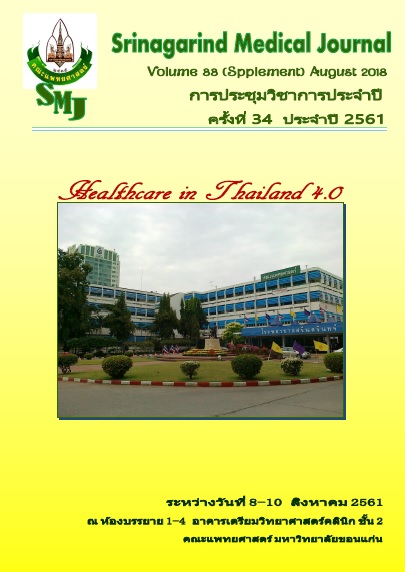Proportions of the High-Risk Group Who Have Sufficient Knowledge on Stroke in Samliam Community, Khon Kaen Province
Keywords:
Cerebrovascular disease, unilateral weakness, knowledge on strokeAbstract
Background and Objective: Cerebrovascular disease is a critical public health problem. The delayed admission for an appropriated treatment mostly is a result from insufficient knowledge of the disease in high-risk group and causes morbidity. This study aimed to explore the proportions of high-risk group who have sufficient knowledge on stroke and possible associated factors in Samliam community, Khon Kaen province.
Methods: This was a descriptive study. The study population was 941 high-risk people in Samliam community, and 140 subjects were sampled by simple random sampling. A self-administered questionnaire, which collected general information and stroke knowledge, was used. Data was analyzed for proportion, frequency, percentage, median, interquartile range, 95% CI, odds ratio and Pearson Chi-square test.
Result: Response rate was 93.6% (131/140). The proportions of high-risk group who had sufficient knowledge of cerebrovascular diseases were 74.8% (95% CI: 66.3, 81.8). Pass through the standard on risk factors was 92.3%, on symptoms was 89.0% and managements was 87.0%. The factors those may relate to sufficient knowledge were diabetes mellitus (OR 2.94, 95% CI : 1.12,7.87) and previous knowledge acquired (OR 3.96, 95% CI : 1.20,13.06).
Conclusion: About 3 in 4 (74.8%) of the high-risk group acquired the sufficient knowledge of cerebrovascular disease. Factors that may associate with sufficient knowledge are diabetes and previous acquired knowledge.


